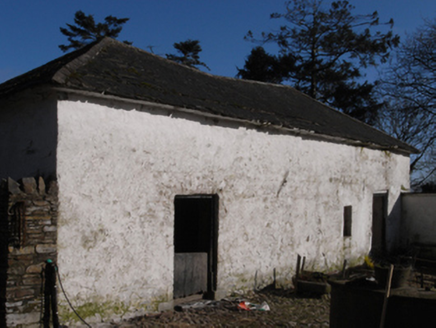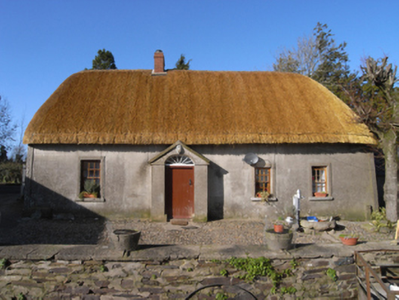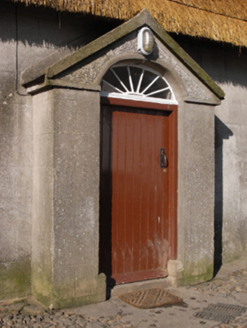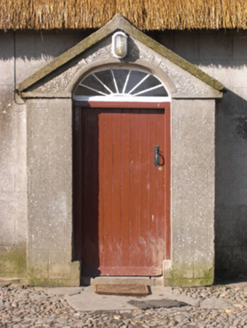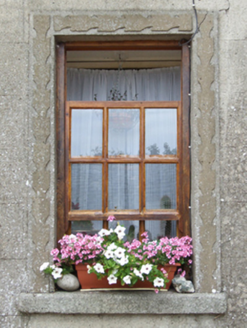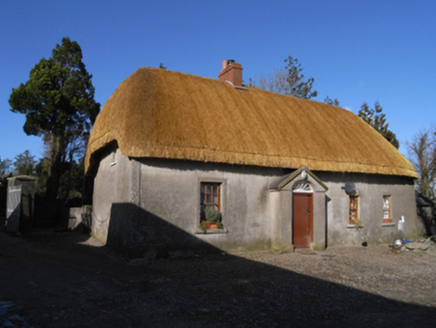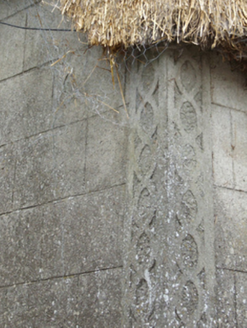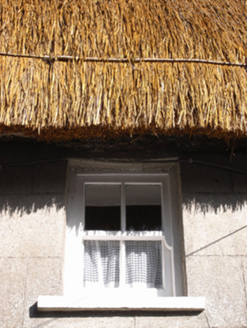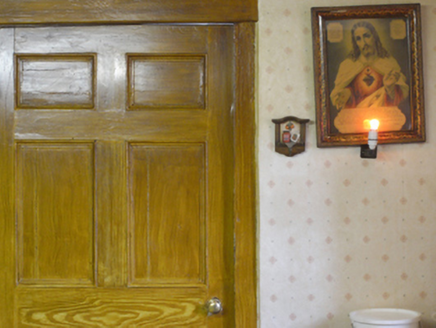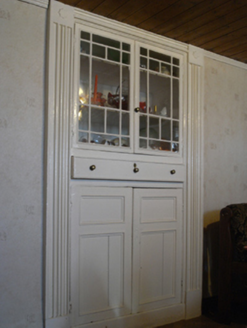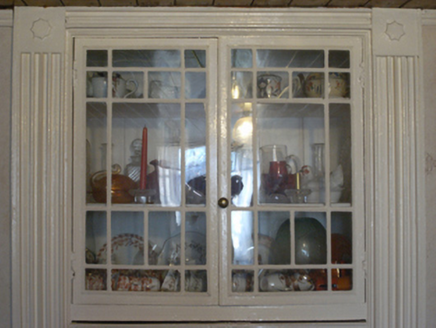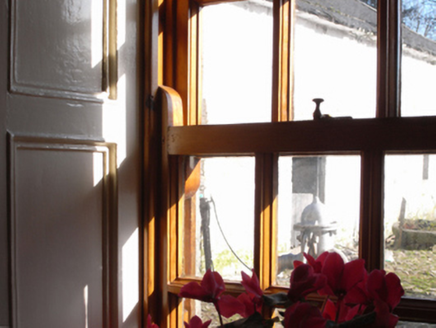Survey Data
Reg No
15702648
Rating
Regional
Categories of Special Interest
Architectural, Social
Original Use
Farm house
In Use As
Farm house
Date
1700 - 1840
Coordinates
302380, 136207
Date Recorded
18/08/2007
Date Updated
--/--/--
Description
Detached four-bay single-storey lobby entry thatched farmhouse with dormer attic, extant 1840, on a rectangular plan off-centred on single-bay single-storey gabled windbreak. Reroofed, 2008. Part chicken wire-covered replacement hipped oat thatch roof on collared timber construction with exposed stretchers to ridge having exposed scallops, red brick Running bond off-central chimney stack having stringcourse below capping, and exposed hazel stretchers to eaves having exposed scallops. Rendered, ruled and lined battered walls with "Guilloche"-detailed rendered strips to corners. Segmental-headed off-central door opening with threshold, and concealed dressings framing timber boarded or tongue-and-groove timber panelled door having fanlight. Square-headed window openings with cut-granite sills, and rendered surrounds framing six-over-six timber sash windows having part exposed sash boxes with two-over-two (south) or three-over-six (north) timber sash windows to side elevations. Set in courtyard with rear (west) elevation fronting onto road.
Appraisal
A farmhouse identified as an important component of the vernacular heritage of County Wexford by such attributes as the rectilinear lobby entry plan form off-centred on a characteristic windbreak; the construction in unrefined local materials displaying a pronounced battered silhouette with sections of "daub" or mud suggested by an entry in the "House and Building Return" Form of the National Census (NA 1901; NA 1911); the somewhat disproportionate bias of solid to void in the massing; and the high pitched roof showing a replenished oat thatch finish: meanwhile, such traits as the simple radial fanlight; and the surface finish simulating ashlar stone work, all illustrate aspirations to "gentrified" architecture (cf. ----). Having been well maintained, the elementary form and massing survive intact together with substantial quantities of the original fabric, both to the exterior and to the interior, thus upholding the character or integrity of the composition. Furthermore, a "cow tail" waterpump (extant 1903); and limewashed outbuildings (extant 1840), all continue to contribute positively to the group and setting values of a neat self-contained ensemble making a pleasing visual statement in a rural street scene.
